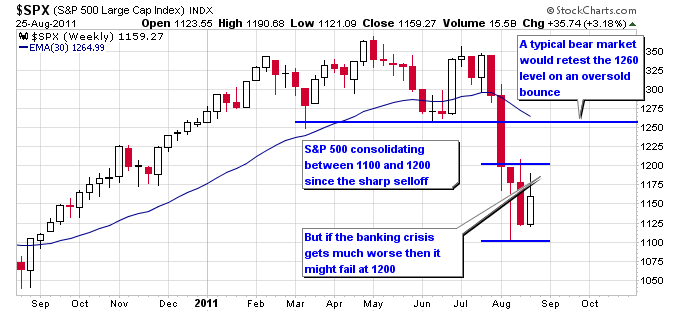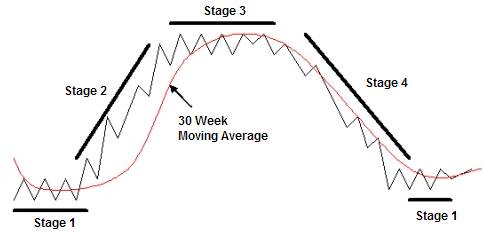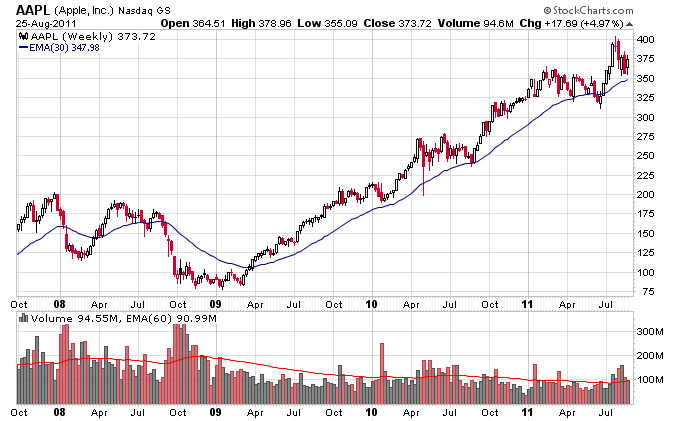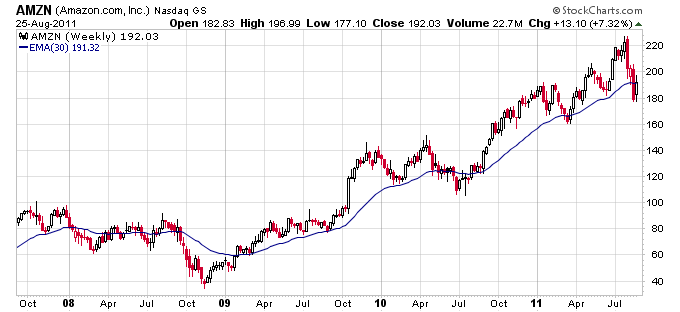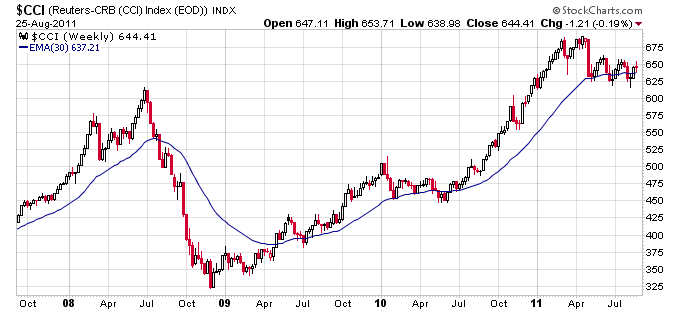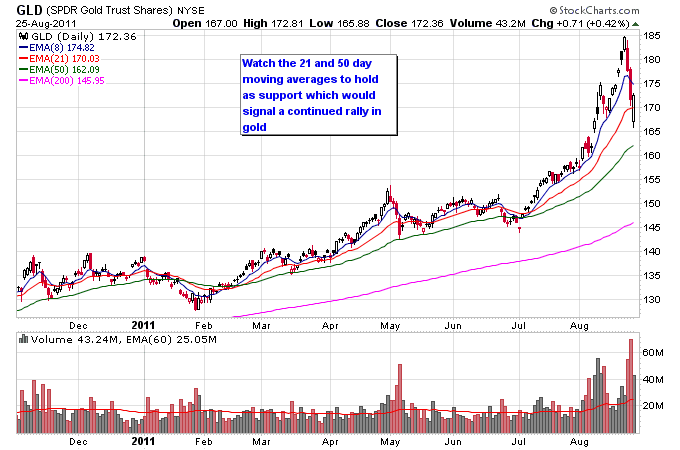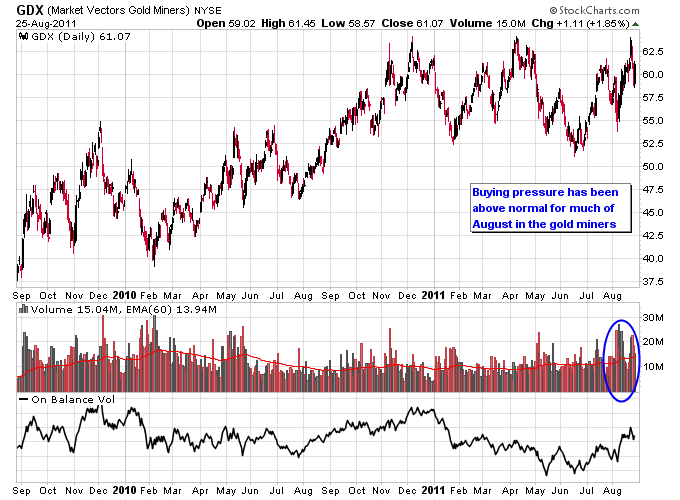The S&P 500 has been consolidating for two weeks now between 1100 and 1200 ever since the dramatic plunge earlier in the month. The question now is do we get a bear market rally that would logically retest the 1260 level on the S&P 500? Or does the market come under much more severe pressure with an acceleration in the European debt crisis? With the instability of the current situation it’s hard to make a call either way, which is why it’s prudent to be prepared for either situation.
Looking across market sectors, the damage done from the selloff was almost across the board. This means that most of the market has to deal with overhead resistance on the way back up, and after such a significant selloff that resistance isn’t going to go down without a fight. So if you take the optimistic side of the trade and think that we go up and retest 1260 from here, then the market is going to need leaders to follow on the way back up. Fortunately some of the market leaders since 2009, stocks such as AAPL, IBM, and AMZN, haven’t taken as much technical damage as the rest of the market. If the market was to regain enough footing for a sustainable bounce those stocks would be expected to re-emerge as market leaders. From a Stage Analysis perspective AAPL is clearly still in a Stage 2 uptrend, while IBM and AMZN are more in a Stage 3 consolidation that would be expected to move back into a Stage 2 advance if the market were to continue bouncing.
Commodities were pretty much the only sector that escaped the selloff without too much damage, but within the commodities complex it was a mixed bag. Gold surged, agriculture held up, and oil sold off with the rest of the stock market. The CCI Commodities Index is in a Stage 3 consolidation between 625-650. A break back above 650 would be bullish and could suggest a renewed uptrend.
Even with the pullback over the last few days, gold has been the shining star over the last two months. It has acted much differently so far than it did in 2008, where it sold off with the rest of the market during that bear market. Make no mistake about it, gold is the current leadership sector across the financial markets. Simply put, the rally that started off of the bottom in 2008 has accelerated over the last few months instead of going down with the rest of the market. Many analysts are declaring gold dead in the water since it is too overbought and too far stretched above its long term moving averages. It could be, but it could also be getting ready to run to $2000 and then some. Gold has a couple of things going for it even though it has gotten a little stretched at the present time: 1) it’s the only market making new highs with no overhead resistance and 2) it’s entering the time for the seasonally strong period in gold. When markets accelerate like gold has recently, they find shorter term moving averages as support, which help indicate the the move is still ongoing.
Another positive sign for the gold sector is renewed money flow into the gold mining stocks, along with their ability to hold up in the face of a falling stock market. The GDX gold miners ETF has been able to maintain above its June lows while the stock market swooned. Buying pressure has also bottomed in GDX since May and has seen a sharp increase in August, as GDX attempts to breakout after a nearly year long consolidation.
One thing that could throw a wrench in the ability for commodities and gold to rally is a break higher in the dollar. The dollar is still in a Stage 4 downtrend but support at 74 has still not broken on the dollar in multiple months. Really the chart of the dollar is a nice mirror image of the CCI commodities index at the current time, where a breakdown in one will likely signal a breakout in the other.
Since much of the stock market has potentially started a longer term transition into a Stage 4 downtrend, or a bear market, prudence and caution are the name of the game. The goal at the end of a bear market is to have two things as intact as possible: physical capital and emotional capital. Getting caught in a severe Stage 4 downtrend can not only cause dramatic losses, but more importantly those losses can impair the emotional ability to re-enter the market once the trend lower has completed. At times like these trend following techniques can be very helpful. If the leadership sectors of the market, such as gold, commodities, and specific stocks, turn lower with the rest of the market, then the bear is in full control.
